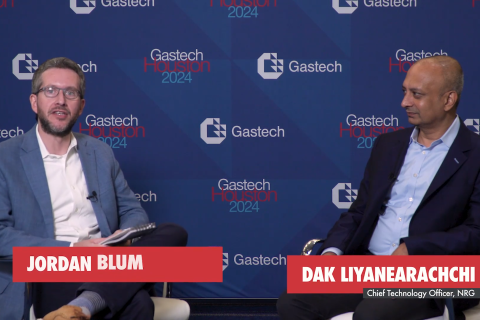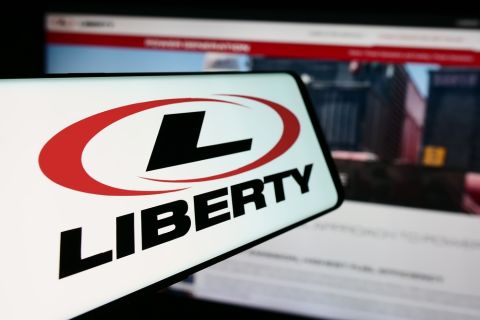The process of hydraulic fracturing and the chemicals used in that process are becoming increasing concerns for environmental groups, the general public, and regulatory bodies. These concerns stem from the fear that the chemicals used during well stimulation processes will contaminate drinking water sources and damage the environment. As a result, energy service companies are striving toward greater transparency with well stimulation processes and are making their products more environmentally friendly. But while many service companies are marketing their products as “green” or “environmentally friendly,” Sanjel Corp. wanted to ensure it could back up those claims with strong scientific evidence.
The Canadian-based global energy services provider has always focused on continuous improvement of its pressure pumping and completions solutions offerings. In alignment with this, it has maintained a strong commitment to balancing its business performance with its social responsibility and environmental stewardship.
Chemical rating system
In response to the growing concern over hydraulic fracturing chemicals, the company developed the Sanjel Chemical Hazard Rating System (SCHRS) to help define a standard for rating the hazard level of its products and to identify ways to reduce the impact of its products on the environment.
The SCHRS is founded on the United Nation’s Globally Harmonized System of Classification and Labeling of Chemicals (GHS). The GHS is either fully or partially implemented by authorities in a number of countries, including the EU, the US, Canada, New Zealand, Japan, and Korea. The GHS allows the classification of chemicals in 16 physical hazard classes, 10 health hazard classes, and three environmental hazard classes. Multiple categories and subcategories classify the level of hazard within many of these hazard classes. The classification of products according to GHS requires quantitative data, and GHS criteria include recommended test protocols for each hazard class.
However, the GHS does not explicitly provide the rating or prioritization of chemicals – it simply provides an indication of the inherent hazard. The SCHRS system takes the process one step further by evaluating the chemical hazards within products, giving technicians a clear picture of how different products directly compare to one another so that better alternatives can be identified.
The company first determined that two components were essential to successfully create a hazard rating system: a tool for assessing the severity of each hazard inherent to a given chemical and a determination of the relative severity when comparing it to other hazards. It also was important that the criteria used to classify these hazards be quantitative and definitive wherever possible to avoid ambiguity and inconsistencies.
Numbers are generated for each hazard class. Each of the scores associated with a classification is multiplied by the hazard class weight factor. The numbers are added separately for each hazard group (health, physical, and environmental) to generate a set of three scores for the product. These scores can then be used independently or can be added together to determine the overall score for each product.
The system was validated using a number of chemicals that already had well documented hazard profiles, ranging from harmless to extremely harmful. Using the company’s experience with the materials used for validation along with the products that had already been classified, different levels of acceptability were determined.
Products with an overall score above 30 were deemed unacceptable, while products between 30 and 20 require improvement. Products between 20 and 10 are acceptable, while scores below 10 are preferred. Products classified as nontoxic require a score of 0.
Application
Once the rating system was validated, Sanjel began applying it to the company’s current portfolio of products, gathering data from authoritative assessments and conducting in-house environmental testing to put the rating system to work. Surrogates were used in situations where appropriate data could not be found for certain hazard classes.
The company then looked at lowering the overall hazard rating of product blends for specific jobs. Acid spearhead blends used prior to fracturing treatments often contain products that have a higher hazard score than fracturing additives themselves, so the company decided to target those types of blends as a starting point. The acid spearhead chosen was used exclusively in the Eagle Ford formation and contains a corrosion inhibitor, demulsifier, iron control agent, and defoamer. The products in the incumbent blend were classified according to GHS criteria and then assessed using the SCHRS to determine a baseline score. At 21.5, the corrosion inhibitor was the prime contributor to the high SCHRS score.
The R&D team looked for replacement products both inside and outside the company’s current product line, keeping in mind that performance and cost also are important considerations. Several products were found and scored differently in both hazard rating and performance. The best inhibitor scored a 9.5 and performed even better than the incumbent inhibitor. In addition, the team identified a demulsifier that scored 50% lower than the incumbent product and easily passed stability and compatibility performance testing. By replacing products in the acid spearhead blend, the company reduced the SCHRS score from 35.5 to 15.5 – representing an improvement of 56% – while improving performance and maintaining pricing.
Success brings growth
With the early success of its hazard rating system, the company continued to invest in its environmental stewardship initiatives. Its corporate technology group has grown from a staff of nine to almost 20 since the SCHRS was developed, and the rating system has been integrated into the product development process. The staff now includes a toxicologist and an environmental scientist, both dedicated to ensuring that the data located through research and generated through in-house environmental testing are accurate and relevant. As the SCHRS process has evolved, Sanjel has been able to identify and prioritize areas of its product line that require improvement. The team is now equipped to quickly assess hazard profiles of individual components in a product, the product as a whole, or the entire fluid system. The success of the program has given the company confidence that the system is robust and reproducible, which is why it is now used as a prerequisite for every new product Sanjel considers adding to its line.
Recommended Reading
Companies Hop on Digital Twins, AI Trends to Transform Day-to-day Processes
2024-10-23 - A big trend for oil and gas companies is applying AI and digital twin technology into everyday processes, said Kongsberg Digital's Yorinde Lokin-Knegtering at Gastech 2024.
Understanding the Impact of AI and Machine Learning on Operations
2024-12-24 - Advanced digital technologies are irrevocably changing the oil and gas industry.
Exclusive: Embracing AI for Precise Supply-Demand Predictions
2024-10-17 - Dak Liyanearachchi, the CTO with NRG, gives insight on AI’s capabilities in optimizing energy consumption and how NRG is making strides to manage AI’s growth, in this Hart Energy exclusive interview.
Push-Button Fracs: AI Shaping Well Design, Longer Laterals
2024-11-26 - From horseshoe wells to longer laterals, NexTier, Halliburton and ChampionX are using artificial intelligence to automate drilling and optimize completions.
Liberty Capitalizes on Frac Tech Expertise to Navigate Soft Market
2024-10-18 - Liberty Energy capitalized on its “competitive edge” when navigating a challenging demand environment in third-quarter 2024, CEO Chris Wright said in the company’s quarterly earnings call.
Comments
Add new comment
This conversation is moderated according to Hart Energy community rules. Please read the rules before joining the discussion. If you’re experiencing any technical problems, please contact our customer care team.





